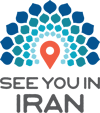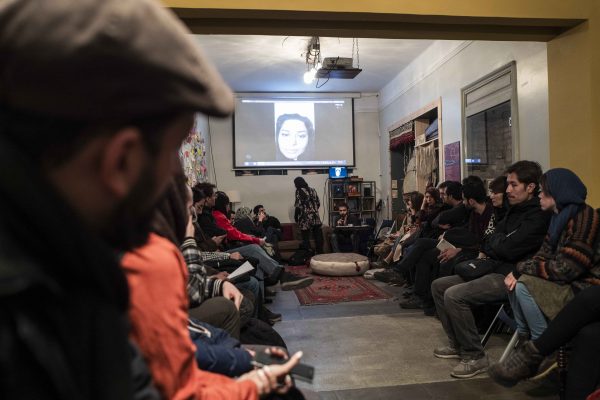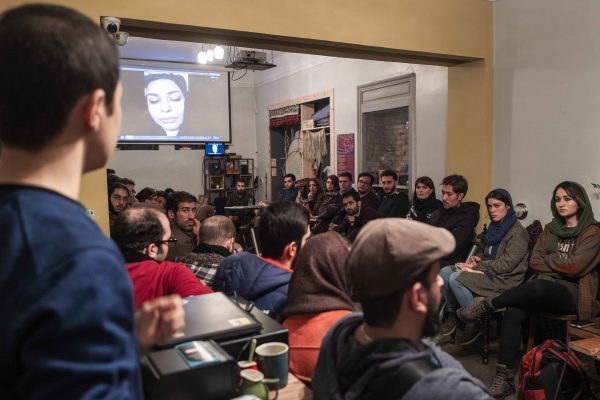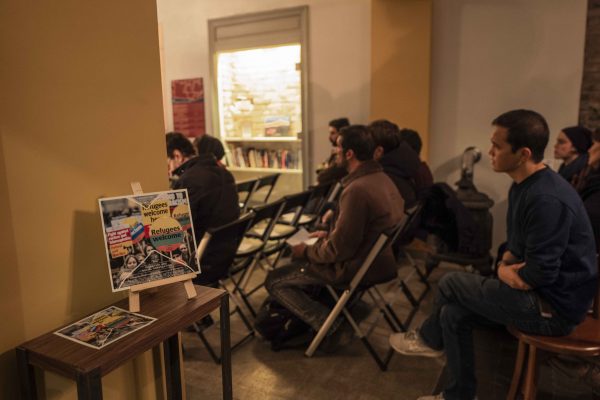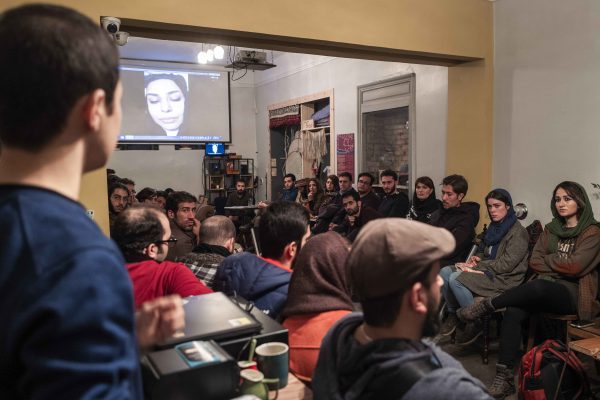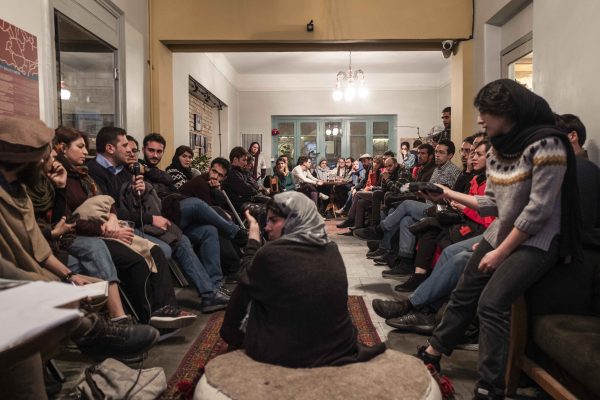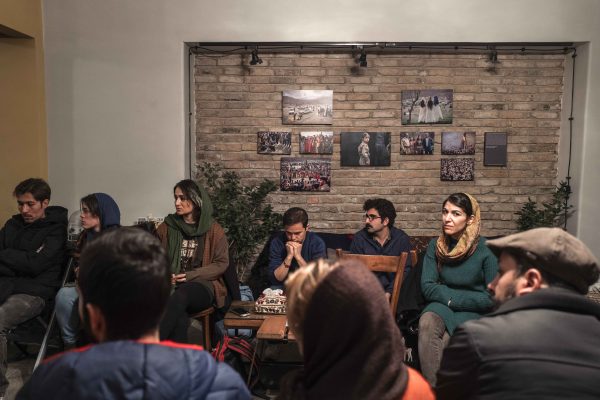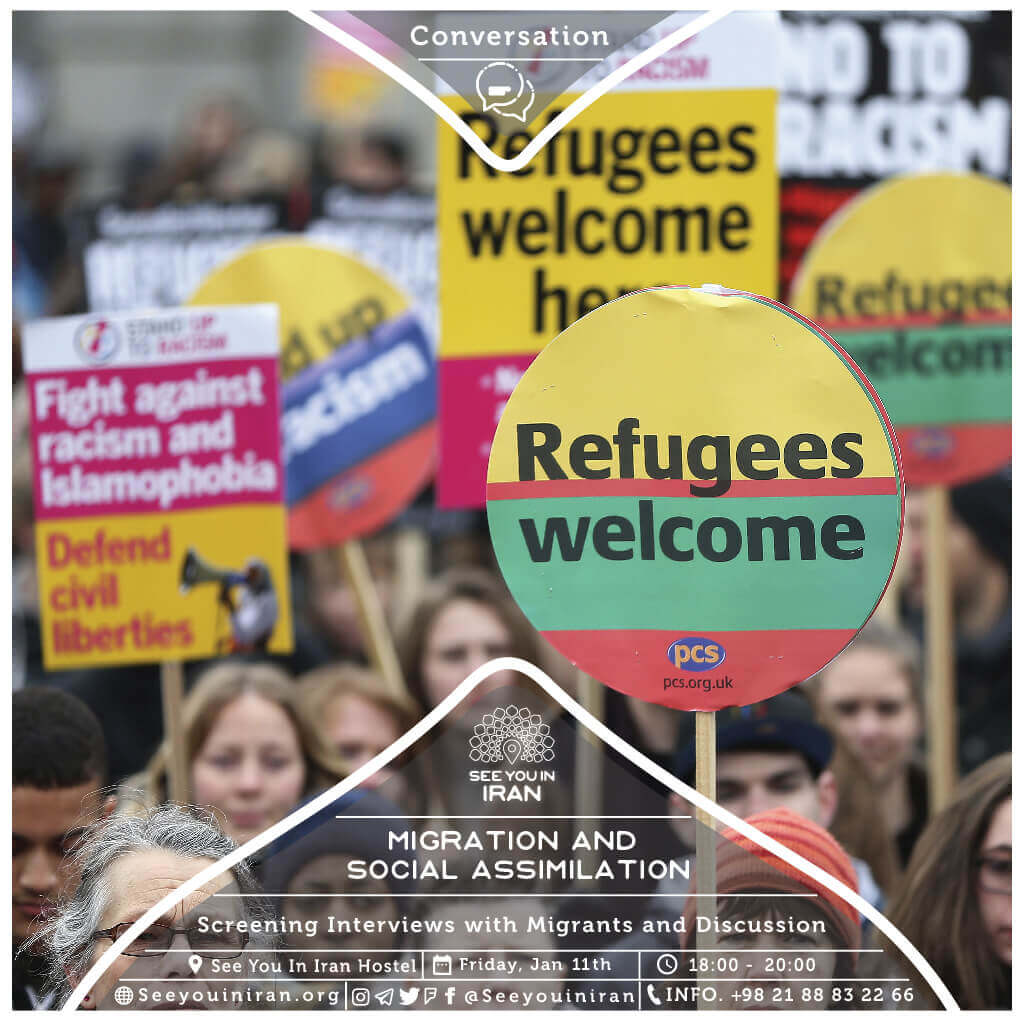The 5th night of See You in Iran’s migration event series explored integration during displacement. We had recorded an interview with individuals who have faced challenges of migration and integration which was shown in the first segment of the event. Together with the audience we explored whether migrant assimilation into the host community is constructive. Moreover, we looked at to what extent the host community should be welcoming of displaced people.The wide spectrum of backgrounds and the diversity of intentions for migration amongst the interviewees broadened the conversation. The concept of Migration is as old as history, though recently it has become more familiar to the population, it has been portrayed by the media more often and escalation of armed conflicts in different part of the world has made it a concern for the majority of international community.
Iranian migrants are struggling with integration. They are often marginalised because of their different appearances (skin color, facial features, clothing), if they immigrate to places other than major cities, in which these behaviors are a bit less palpable. It was indicated by one the participants that as a migrant it is the individual’s responsibility to become prepared for such segregation and it is consolidated in Iranians’ minds to other themselves when they migrate to developed countries which essentially created a barrier for making a dialogue. The idea was challenged by other participants. Hamraz, one of the interviewees who is a single parent living in Denmark explains, as an immigrant from a middle country are perceived as insignificant in comparison to the local population consequently your social class and education are disregarded. Children of the couple who immigrated to Sweden were bullied by the local children but the incident was ignored by the school officials. They were also verbally abused because they are slightly overweight which is dissimilar to the majority of their classmates. As a result, they hate hot seasons as they loathe wearing clothes that display their bodies. Clearly, identity crises and othering are common symptoms within this demographic; however, it remains unclear which one initiates or amplifies the other.
What is embedded in the minds of the host country’s population that treat an immigrant as such? Ali shared with us one of his encounters with exclusion. While traveling to Qazvin from Tehran, he was accompanied by a supposedly friendly cab driver whom he socialized with for some time until he was asked where he was from. When he replied “Afghanistan”, the ambience of the ride was altered. The conversation was stopped and Ali could notice the disgust in the drivers face. Afghan immigrants are only allowed to be employed in labor and low level work. This exists an already existing classist perception that central Asian migrants only qualify for manual labor. Though not only the case in Iran, stereotypes are difficult to be altered once they are created. One of our guests suggests that if the education system in Iran would have been more inclusive and children of the host country could become familiar with the existence of migrants at young ages they might not alienate the foreigners when they get older. This idea could definitely make an impact though one of the participants who migrated to Canada when in high school said the alienation still persists even though the demographic in Toronto’s high schools is diversified.
There is a growing body of educated Afghan population in Iran however their existence is completely ignored by the majority of Iranians on conscious and unconscious levels. Social media can also make an impact, although temporarily but steadily, and it is at the disposal of every individual. Language seems to play a critical role in the integration process. For teenagers and young adults learning a new language is not as much of a challenge that it is for their parents. Learning the native language could speed up the integration process. The experiences of the participants indicate that not only speaking the language so important but speaking with the native access will extremely speed up the integration process.
What kind of tactics can be deployed in order to make integration simpler if it is the goal? Creating communities that are consisted of migrants can be a solution. These communities then can comprehensively demand the necessities. It can be argued that these communities might be harmful if it becomes a barrier between migrants and locals and it can lead to segregation. Learning the language as mentioned before and being open to experience occupations that might not have been defined within one’s comfort zone can also be solutions. To what extent though a society that provides the conditions for integration is preferable? The fact of the matter is integration requires unification. In a world that consists of varieties in cultures and costumes, differences must be celebrated not ignored.
در چهارمین شب از سری رویدادهای مهاجرت مجموعهٔ See You in Iran به بررسی مقولهی ادغام اجتماعی پرداختیم. در ابتدا مصاحبهی مجموعه See You in Iran با تعدادی از مهاجران و چالشهای مهاجرت پخش شد. پس از شنیدن روایتهای این افراد، در بخش دوم، گفتگویی دربارهٔ موضوعات مطروحه، حول محور ادغام اجتماعی و مهاجرت شکل گرفت. سوالات اصلی این بخش از این قرار بودند: اهمیت ادغام اجتماعی در فرآیند مهاجرت تا چه اندازه است؟ آیا اساساً امکان ادغام را برای مهاجران فراهم ساختن امری مثبت است؟ فقدان این امکان چه پیامدهایی برای مهاجران دارد؟
پس از دیدن مصاحبه و شنیدن صحبتهای افرادی که با مقاصد و پیشینه فرهنگی گوناگون اقدام به مهاجرت کرده، و مصائبی که در این مسیر متحمل شده بودند، بستر گستردهای برای بررسی تأثیر ادغام اجتماعی در فرایند مهاجرت فراهم شد. با وجود اینکه مهاجرت از ابتدای زیست بشر وجود داشته است، در حال حاضر به علت تاثیر رسانه و شرایط نامساعد زندگی در مساحت قابل توجهی از کرۀ زمین به دلایل مختلف از جمله جنگ و تخریب محیط زیست، حساسیت برانگیز شده است.
مهاجران ایرانی در سطوح متفاوتی با پدیدهی ادغام مواجه میشوند. اگر مهاجرت به مناطقی غیر از کلانشهرها صورت پذیرد، با رفتارهای تبعیض آمیز آشکارتری روبرو میشوند. خصوصیات ظاهری افراد مهاجر (رنگ پوست، مو، پوشش و …) که متفاوت از مردم جامعه مقصد است، موجب بروز رفتارهای دیگریسازی میشوند. در مقیاسی دیگر، ایرانیانی که به کشورهای جهان شمال مهاجرت میکنند، در غالب اوقات برای خود موضع فرودست متصور شده و در نتیجه راه شکلگیری تعامل را برای خود مسدود میکنند. همراز، مادری که در دانمارک زندگی میکند، بر این باور است که یک مهاجر جهانسومی، همیشه در قیاس با مردم جامعهی مقصد، فردی نامطلوب و ناکارآمد تلقی شده و میزان تحصیلات و طبقهی اجتماعی وی نادیده گرفته میشود. برای مثال، فرزندان یک خانواده مهاجر ایرانی در مدرسهای در سوئد مورد آزار قرار گرفتند. این آزارها در غالب اوقات ذهنی و حتی در پاره ای از مواقع فیزیکی بودند. در حالی که رفتاری از این قبیل واکنش مسئولین مدرسه را همراه دارد اما در خصوص مهاجرین این مطلب از طرف مسئولین نادیده گرفته شد. همچنین به علت تفاوت فیزیک بدنی این بچهها با دیگر هم مدرسهایهایشان، آنها تمایلی به پوشیدن لباسهای تابستانی ندارند و حتی از فصل گرما بیزار شدهاند. این قشر از مهاجران با بحران هویت و طرد اجتماعی مواجهاند و این دو در چرخهای معیوب تشدید میشوند .
چه منطقی در اذهان مردم جامعهٔ مقصد نهادینه میشود که رفتارهای تبعیض آمیز در قبال مهاجران را شکل میدهد؟ علی برای رفتن به قزوین سوار تاکسی میشود. در طول مسیر گفتگوی دوستانهای را با راننده تاکسی برقرار میکند. راننده از علی راجع به ملیت او میپرسد و با شنیدن افغانستانی بودن وی، ادامه مسیر در سکوت طی میشود؛ سکوتی که ریشه در ذهنیت مشترک ایرانی دارد. مهاجرین افغان در ایران فقط مجاز به کار در مشاغلی محدود و عمدتاً کم ارزشاند. این موضوع طی سالیان باعث بوجود آمدن این باور غلط میان غالب ایرانیان شده است که این مهاجران تنها قادر به انجام اینگونه کارها هستند. حضور مهاجران در نظام آموزشی از سنین پایین میتواند در شکلگیری درک مشترک بین مهاجر و میزبان مؤثر باشد. با این حال، یکی از شرکت کنندگان که در سنین پایین به کانادا مهاجرت کرده است، به این نکته اشاره دارد که در این کشور با وجود مدارسی که دانش آموزان در آنها از ملیتهایی گوناگون حضور دارند همچنان رفتارهای تبعیضآمیز در این کشور وجود دارد. در حال حاضر تعداد افغانستانیهای تحصیل کرده در ایران رو به افزایش است اما اغلب ایرانیان یا از وجود آنها بیخبرند یا توجهی به آن ندارند و همچنان مایل به فرودست انگاشتن این مهاجران هستند. در این میان شبکههای اجتماعی میتوانند در تغییر این ذهنیت موثر باشند.
در انتها میتوان این سوال را مطرح کرد که اگر ادغام اجتماعی ابزاری برای زیست بهتر و عادلانهتر مهاجران است، راهکارهای مناسب در جهت تسهیل انجام آن کدامند؟ یکی از اینها، پیگیری مطالبات مهاجران از مجرای تشکیل نهادها و انجمنهای مرتبط با مهاجران است؛ البته با به یاد داشتن اینکه اگر اینگونه اجتماعات تبدیل به مانعی برای برقراری ارتباط میان مهاجران و مردم کشور میزبان شوند، فرایندهای نابرابر قبلی بازتولید خواهند شد. همچنین، آمادگی تجربهٔ مشاغلی که شاید در کشور مبدأ برای فرد دارای اولویت پایینتری بودند نیز میتواند امری مؤثر باشد. البته، یادگیری زبان بومی در این میان از اهمیت بالایی برخوردار است.نقش زبان در فرایند ادغام پررنگ است. یادگیری زبان کشور مقصد برای افراد کم سنوسال با سهولت بیشتری نسبت به والدین آنها انجام میگیرد. حتی لهجه نیز میتواند به فرایند ادغام سرعت بخشد.
اما تا چه حد جامعهای که امکان ادغام را برای مهاجران فراهم میکند ایدهآل تلقی میشود؟ ادغام به میزان قابل توجهی نیازمند یکسانسازی و همگنی است. در جهانی که متشکل از فرهنگهای متنوع است، این گوناگونی باید ارزش نهاده شود و از بین بردن آن برای شکل دادن جامعهای همگن مطلوب نمینماید. به باوری، هرگونه تغییر، صرف نظر از نوع و روند آن، باید به سمتی هدایت شود که جوامع متأثر از آن افراد را همانگونه که هستند پذیرا باشند نه اینکه سعی کنند آنها را به الگوی شهروند ایدهآل خود نزدیک کنند.
What to Expect
Migration and Social Assimilation
Screening interviews with migrants and discussion
Migration, abroad or internally, is mainly a consequence of localization of opportunities in certain parts of the globe. Changes in social and economic settings in states that consider homogenous national identity as a preference culminate in different forms of social assimilation, exclusion from the society and discrimination that migrants are likely to face in host countries or cities. See You in Iran Cultural House has interviewed a number of migrants to, from and within Iran to collect their narratives encountering social assimilation, exclusion and discrimination. Join us at 6:00 PM on Friday, January 11th, at See You in Iran Hostel in Tehran, for the fifth night of our migration event series to watch the interviews and discuss the manifestations of social assimilation thereafter.
Check other events here: Cultural House
